1Z0-149 Online Practice Questions and Answers
Which is true about EXIT and CONTINUE statements?
A. They can be used in any type of loop.
B. They must have a WHEN condition.
C. They have the same effect on the execution of a loop.
D. They must use labels.
Which statement is true about user-defined records?
A. They can be returned from a function.
B. Field types must match column types.
C. The number of fields must match the number of columns in a table.
D. Field names must match selected column names.
Examine this code:
ALTER SESSION SET plsql_warnings='ENABLE:ALL';
/
You compile this function:
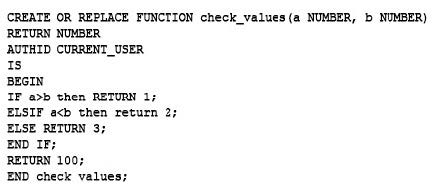
What happens when the function is created with PLSQL_WARNINGS set to 'ENABLE: ALL'?
A. It fails compilation.
B. There are no compilation warnings or errors.
C. A severe compilation warning is generated.
D. A performance compilation warning is generated.
E. An information compilation warning is generated.
Which three are true about functions and procedures? (Choose three.)
A. The ACCESSIBLE BY clause can be used only for procedures.
B. In a function, every execution path must lead to a RETURN statement.
C. Both can have only constants as actual parameters for IN mode parameters.
D. Both can be invoked from within SQL statements.
E. In a procedure the RETURN statement cannot specify an expression.
F. In a function every RETURN statement must specify an expression.
Which three statements can process a dynamic multi-row query? (Choose three.)
A. DECLARE
B. OPEN
C. INTO
D. OPEN-FOR
E. FETCH
F. WHEN
G. CLOSE
SERVEROUTPUT is enabled.
Which is the correct method to use a PACKAGED CONSTANT in SELECT statements?
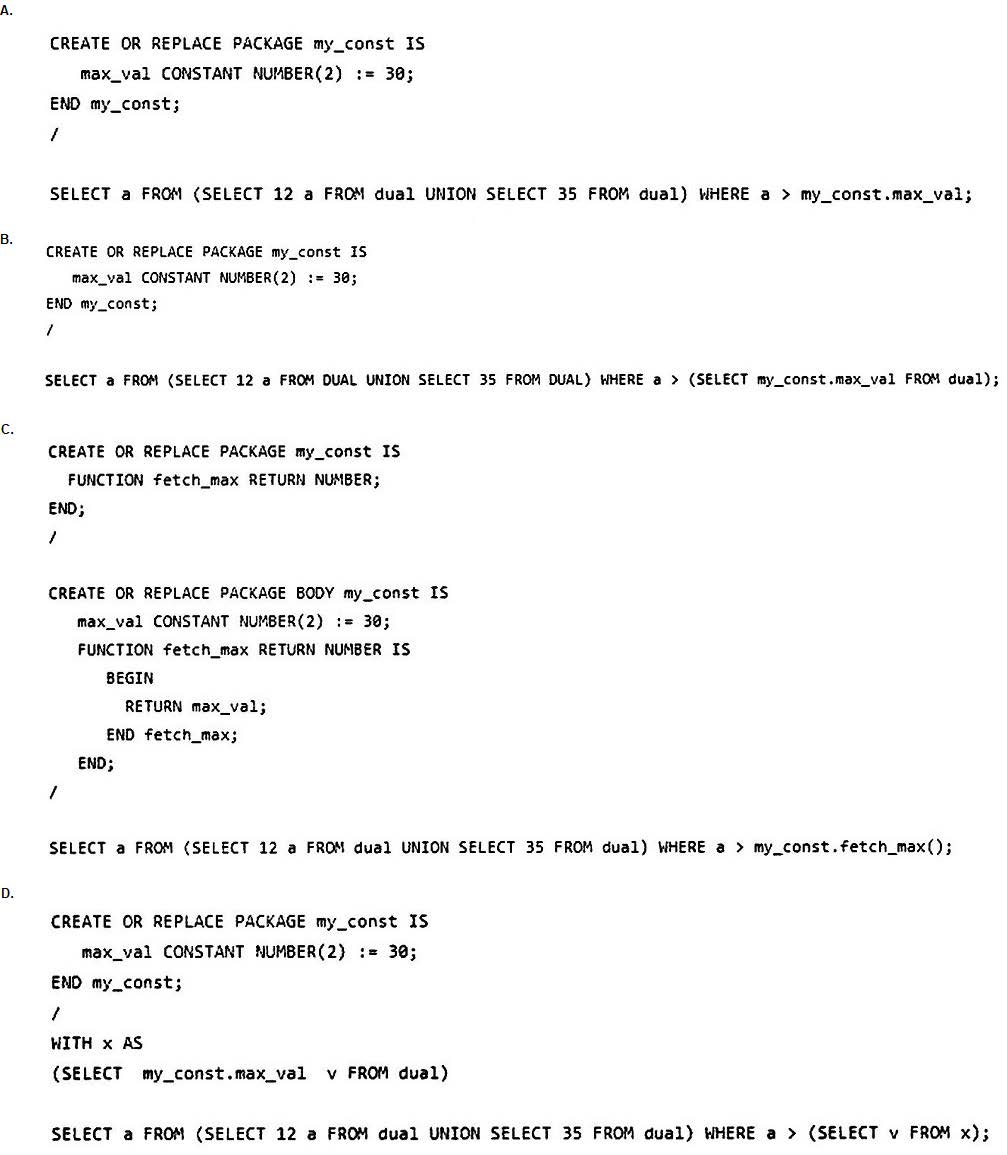
A. Option A
B. Option B
C. Option C
D. Option D
Which code will successfully create a BODILESS PACKAGE to standardize CONSTANTS and EXCEPTIONS declarations?
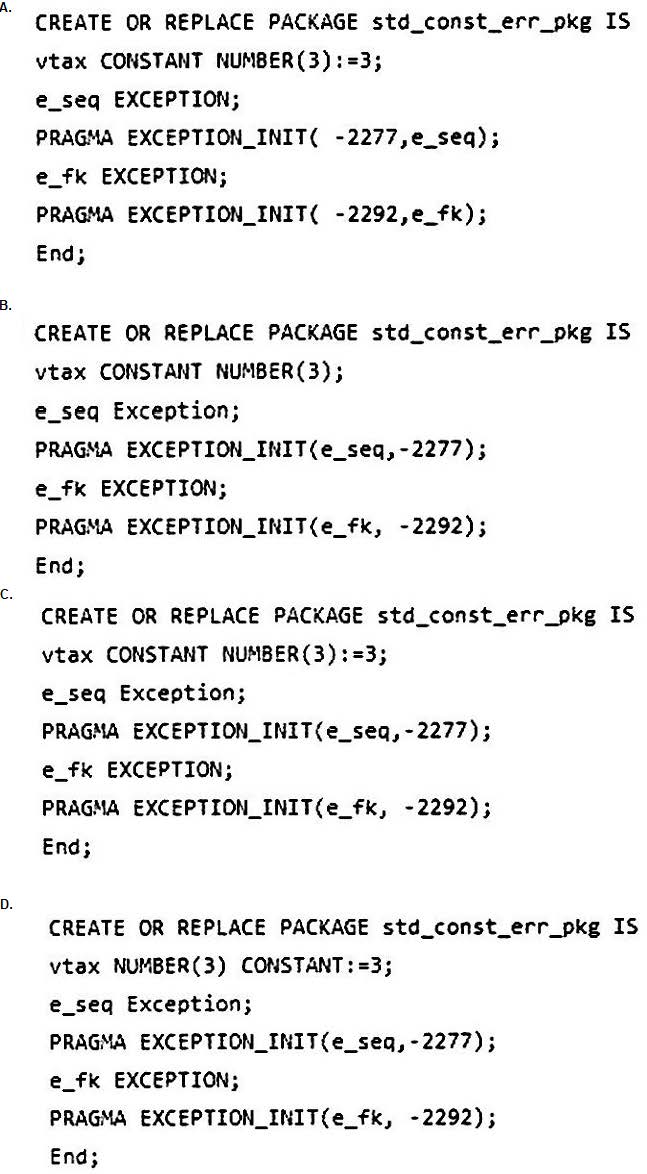
A. Option A
B. Option B
C. Option C
D. Option D
Which is true about counter variables in a FOR loop?
A. It must explicitly be declared.
B. It can be modified in the body of the loop.
C. It cannot be NULL.
D. It is accessible outside the body of the loop.
Examine these statements which execute successfully:

Which anonymous block executes successfully?
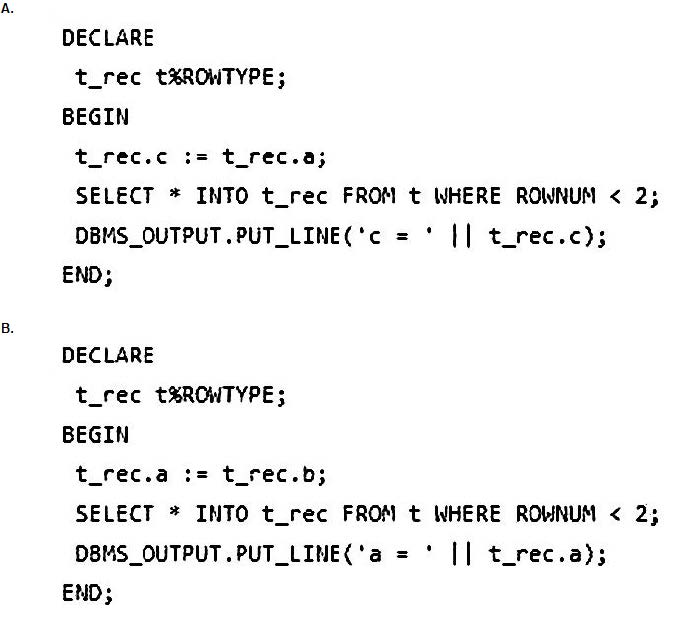
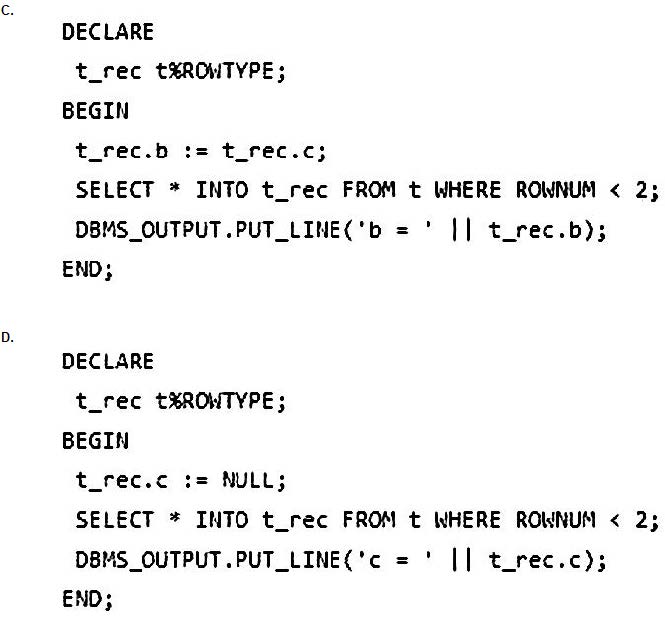
A. Option A
B. Option B
C. Option C
D. Option D
Which is true about the PLSCOPE_SETTINGS parameter?
A. It is deprecated in Oracle 12c.
B. It can be used to obtain information about all identifiers when compiling a procedure.
C. It can be used to control execution of specific portions of the PL/SQL code conditionally.
D. It can be used to control a user's privileges on PL/SQL objects at run time.
Which two are true about collections and RECORD types? (Choose two.)
A. A variable of RECORD type can contain fields of another RECORD type or any collection type.
B. Only associative arrays and nested tables can have elements of RECORD type.
C. All collections and RECORD types can be defined in PL/SQL blocks, packages, or at the schema level.
D. Collections and RECORD types are always dense.
E. All collections and RECORD types can be stored in table columns.
F. VARRAYS, nested tables and each field in %ROWTYPE type variables have a default value of null.
Examine this table in the SH schema:

User SH executes this code:
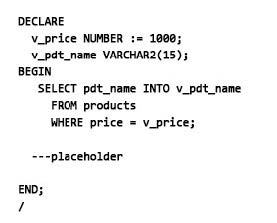
The program must terminate with a user-defined message and no rows displayed if more than one product's price is 1000. With which option must "---placeholder" be replaced?
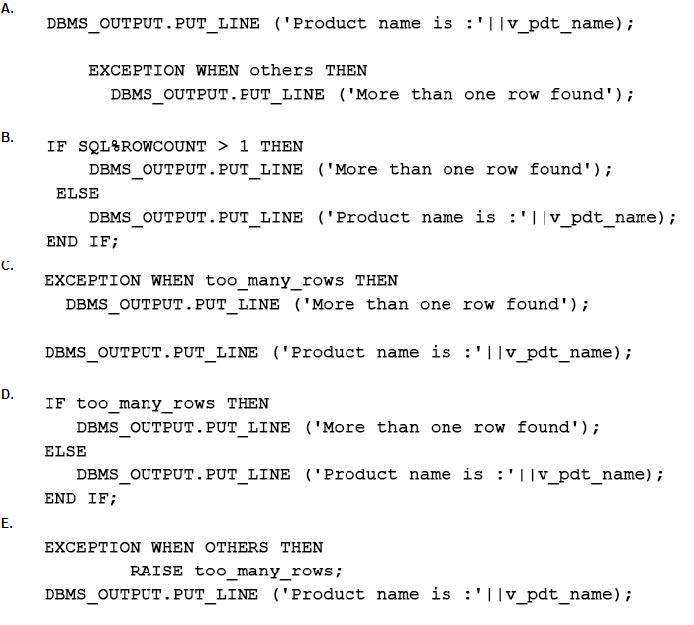
A. Option A
B. Option B
C. Option C
D. Option D
E. Option E
Examine the SH.PRODUCTS table:

A row exists in SH.PRODUCTS with PDT_ID = 1. Now, examine this code and output executed by SH:
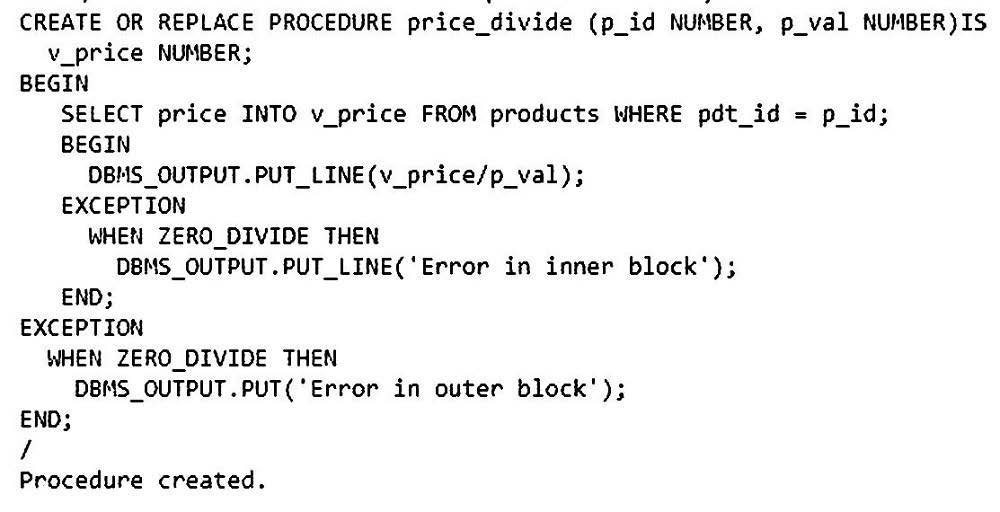
Now, examine this block of code:

Which error message(s) does it display on execution by user SH?
A. Error in inner block
B. Error in inner block Error in outer block
C. Error in inner block Error in calling block
D. Error in inner block Error in outer block Error in calling block
Which two are true about exception handling? (Choose two.)
A. Internally defined exceptions can be handled only by the OTHERS exception handler.
B. All declared exceptions are raised implicitly by the runtime system.
C. User-defined exceptions can be defined in the declarative part of any PL/SQL anonymous block, subprogram, or package.
D. Only predefined exceptions and user-defined exceptions can have a user-declared name associated with them.
E. Predefined exceptions are globally declared in the standard package.
Examine this row of data from the EMPLOYEES table:

Now, examine this block of code which executes successfully:
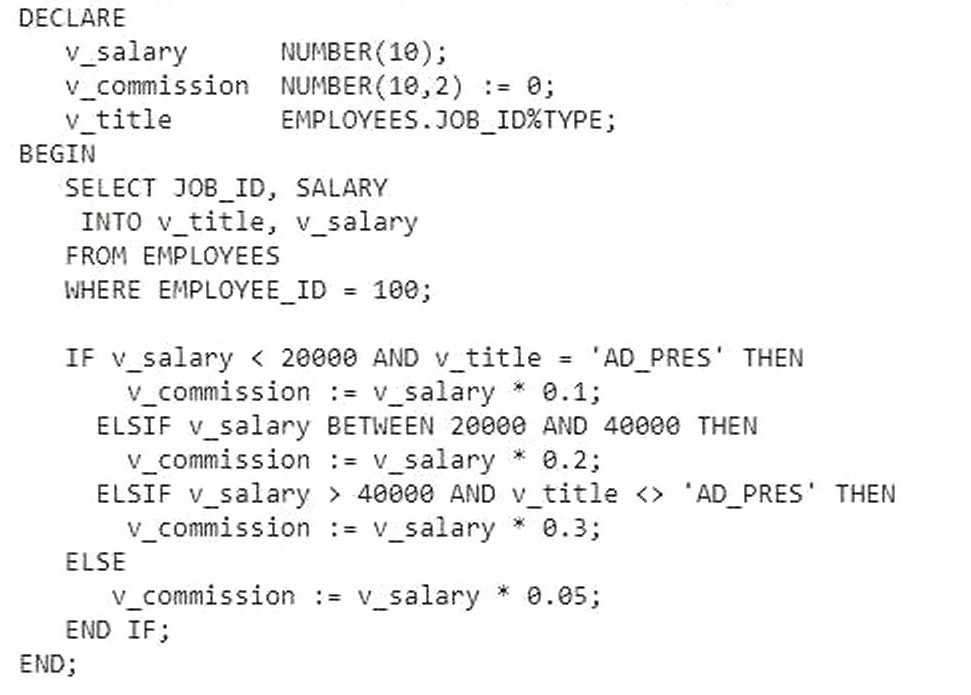
What is the value of v_commission?
A. 5000
B. 15000
C. 2500
D. 10000
